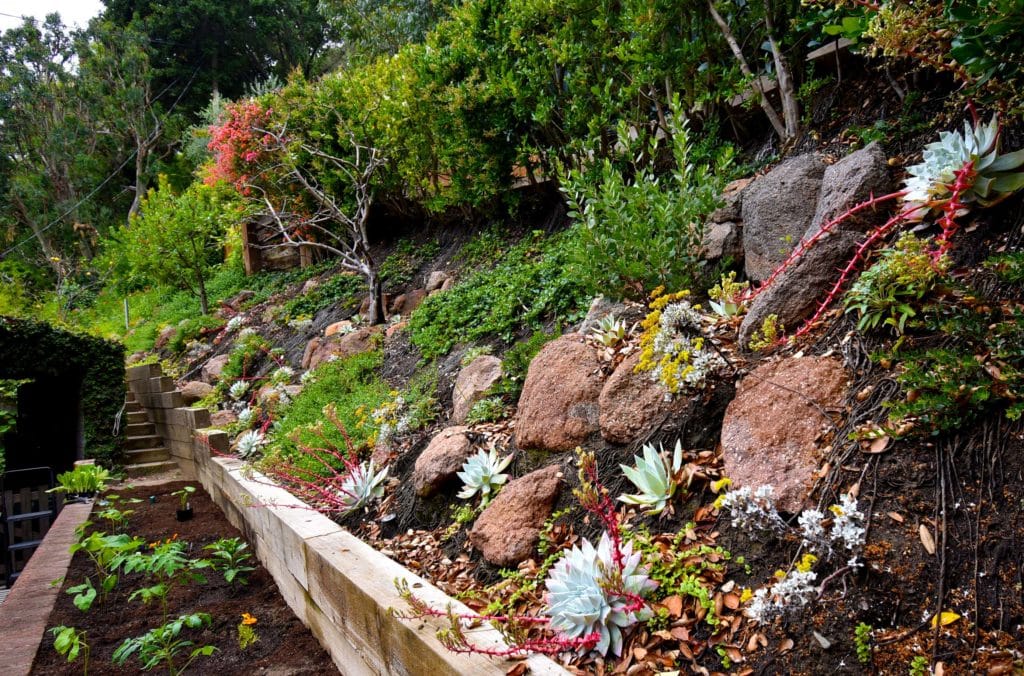

BEFORE AFTER
Problem Solving in the Landscape — Hillsides Design
From Uncomfortable Hillsides to a Meaningful, Tapestry Garden
Hillside gardens can be complicated for a variety of reasons. A lot of the time they are inaccessible, yet offer the opportunity for a beautiful habitat garden from which ALL life can benefit. The most important prerequisite for a successful hillside garden is Patience! Patience in the process from the conception, to installation, then to maturation. Fortunately, we have been blessed with such Clients, and the resulting gardens are providing much joy year round.
If you have hillside situation you most likely live in the ECOTONE. I love this word so much! An ecotone is a region of transition between two biological communities. Much like a forest may meet a meadow, your hillside is likely part of a mountain range, or “wild” area that meets your outdoor living spaces. Alternatively, it may be that your home is part of a constructed community, and your hillside is a product of the grading process. Either way, your hillside provides an opportunity and a challenge.

BEFORE


AFTER AFTER
Common Hillside Issues:
- Erosion Control
- Drainage
- Wildlife
- Specialized Plant Selection
- Proper Plant Establishment
- Sun/Shade Exposure


BEFORE PROGRESS

AFTER
A hillside garden is an opportunity for a tapestry-esque, mosaic approach. Looking to patterns in nature as a guide, paired with a blend of multiple shrubs suited for sloped conditions is most effective for success. Climate-appropriate and native shrubs carry less water weight than succulents and can root themselves more deeply for stabilization and drought tolerance. Grasses and perennials can be used as well, provided that they are suited for the site conditions and compatible with a variety of shrub roots.

BEFORE

AFTER
Polyculture is the key. When selecting plants, ALWAYS consider habitat and biodiversity. Pollinators and other non-human being numbers are dwindling at an alarming rate. Let’s re-imagine our landscapes to be about more than us. Native plants are the first line of defense in loss of habitat and biodiversity.

